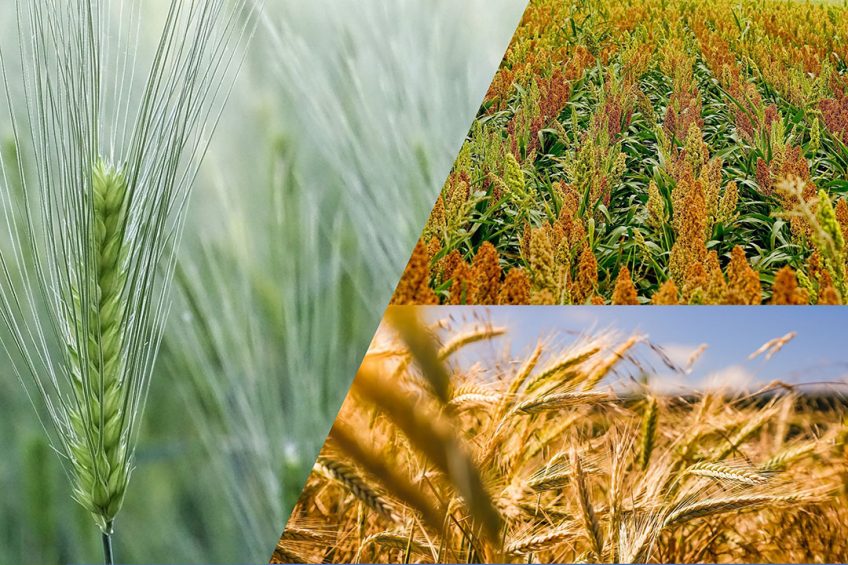Australia set for another big year of grain production

After 2 years of drought, Australia is set for a second year of excellent grain production.
Australia’s MY 2021/22 wheat production is forecast at 22% higher than the previous 10-year average at 29.5 million metric tons (mmt). If this forecast is realised, this would be a mere 3.8 mmt lower than the record-breaking MY 2020/21 wheat crop and the fourth highest on record for Australia. Such a harvest is due to favourable seasonal conditions across much of the grain-growing regions of the country.
From this harvest, Australia is on track to achieve total exports of 23 mmt in MY 2020/21, and it is anticipated exports will remain strong in MY 2021/22 at 21.5 mmt.
Pasture production reduces grain demand for feed
Domestic consumption of wheat in Australia is forecast at 7.5 mmt in MY 2021/22, 4 mmt of which comes from the feed sector. Droughts impacted the dairy and beef cattle industries, but improved rains since early 2020 has greatly increased pasture production and subsequently reduced grain demand for feedlot rations.
More barley used in feed rations
The widening price gap between wheat and barley has also impacted the demand for wheat from the livestock sector. Since the domestic supply pressure for feed grains during the drought, Australia produced a record wheat crop and a near record barley crop in MY 2020/21. This contributed to widening the price gap between wheat and barley to more typical levels with a price premium of around AU$40 (US$29.60) per mt for wheat. This price differential will encourage increased use of feed barley over wheat.
Smaller area planted for barley
Australia’s MY 2021/22 barley production is forecast at 10.5 mmt – 2.6 mmt below the MY 2020/21 estimate of 13.1 mmt, which was the second highest on record after 13.5 mmt in 2016/17. The year-on-year reduction in production is in part due to a forecast decrease in area planted (4.4 million ha to 4.2 million ha) relating to China imposing an 80.5% duty on imports from mid-May 2020 for a period of 5 years.
Consumption of barley in MY 2021/22 is 5.5 mmt. The demand for barley for feed has decreased after drought-breaking rains in early 2020 caused pasture production to improve.
China: duties impact barley exports
Barley exports for MY 2021/22 are forecast at 5 mmt, down 3 mmt from the MY 2020/21 estimate of 8 mmt. It is anticipated that Australian barley will face greater competition in Middle Eastern markets next year as northern hemisphere feed grain production is expected to recover.
Prior to China’s commerce ministry imposing an 80.5% duty on Australian barley in May 2020, China accounted for around two-thirds of Australia’s barley exports. However, Australian barley exporters have been able to diversify feed barley exports away from China, and Australian has exported large shipments to Saudi Arabia and significant amounts to other Middle East markets. Exports to nearby Asian market such as Thailand, Vietnam, and Japan have also risen.
The Australian barley industry is mindful of the circumstances surrounding the success of diversifying feed barley exports away from China. The industry has partly adapted by reducing barley planted area towards canola taking advantage of high prices.
More production of well-priced sorghum
Sorghum is very well priced compared to other feed grains, including wheat and barley, but it is generally regarded as a lower quality feed grain. Although sorghum is a summer crop, and wheat and barley are winter crops, all of them are typically sold year-round on both domestic and export markets. The forecast for MY 2021/22 sorghum production is 1.6 mmt, which is around 7% above the previous 10-year average.
Due to higher use in feed, sorghum consumption in Australia in MY 2021/22 is forecast at 610,000 mt, which is 300,000 mt higher than the MY 2020/21 estimate. Sorghum export forecast for MY 2021/22 is 800,000 mt.
The information in this article has been extracted from a USDA Foreign Agricultural Service report.







